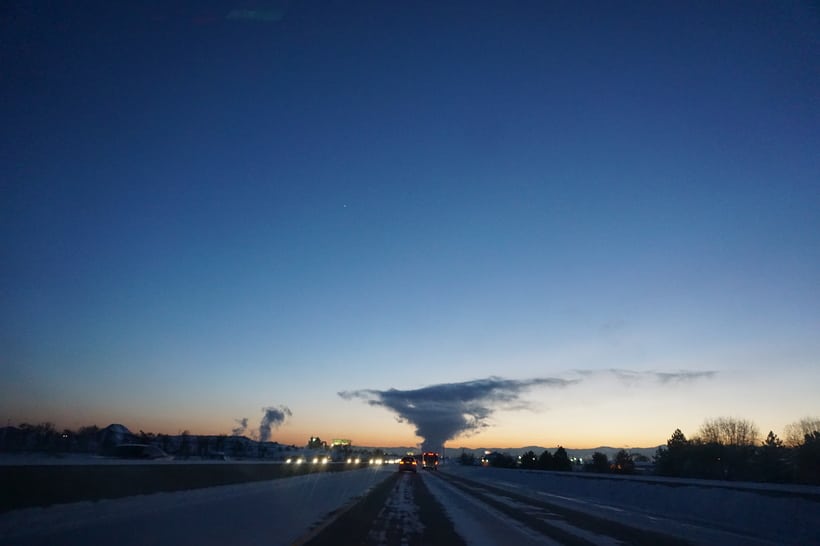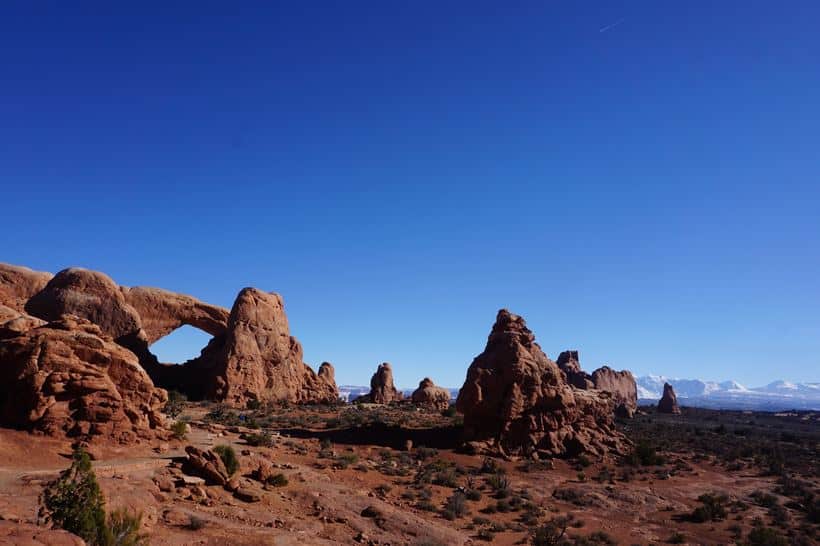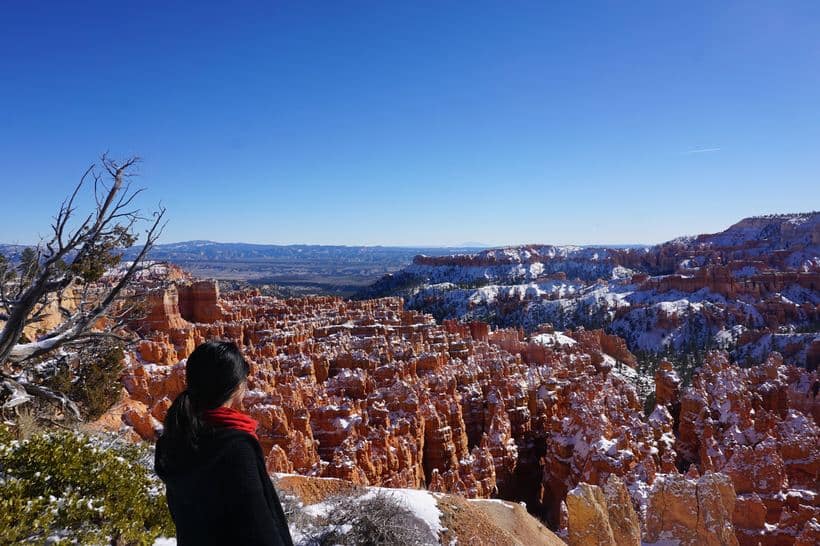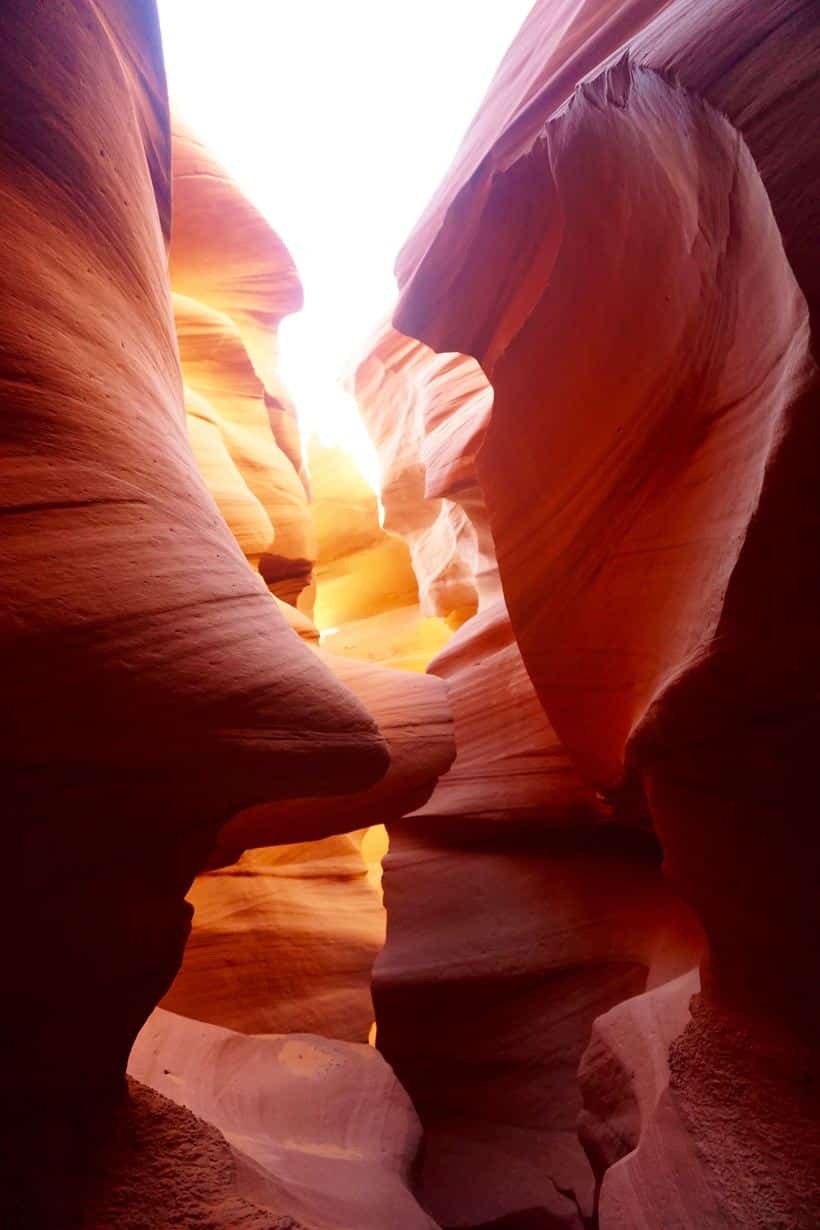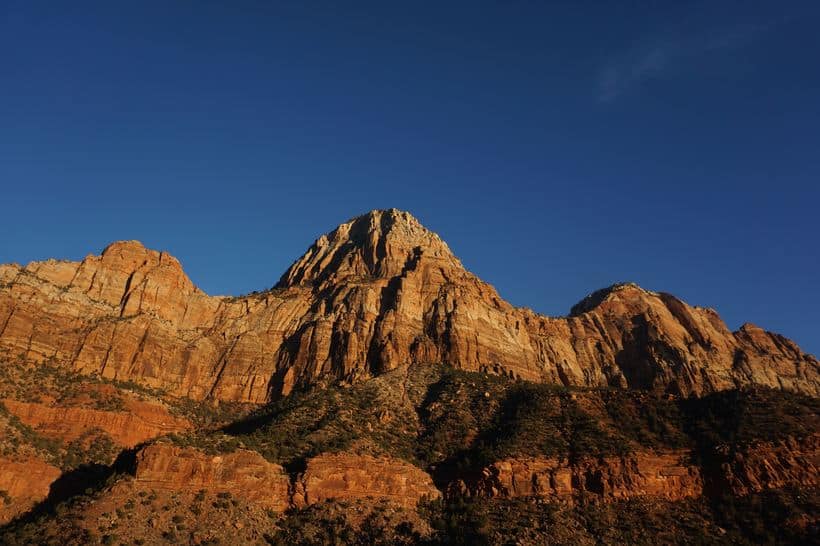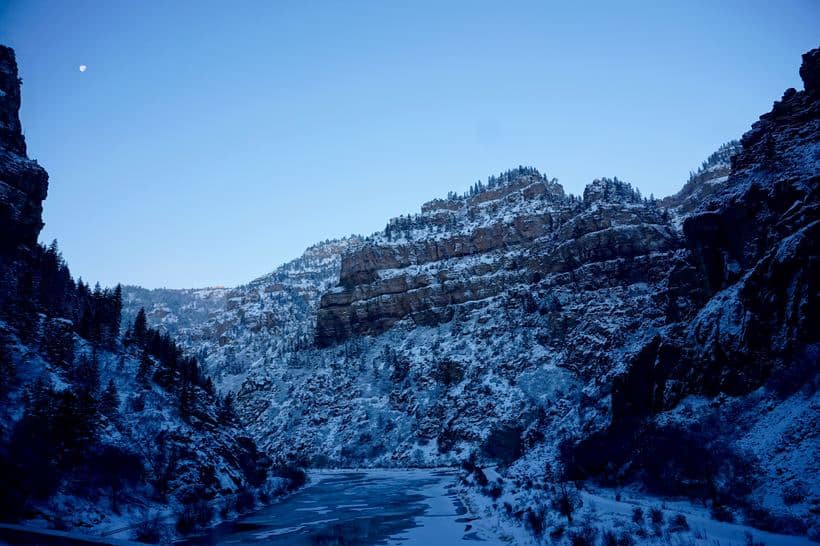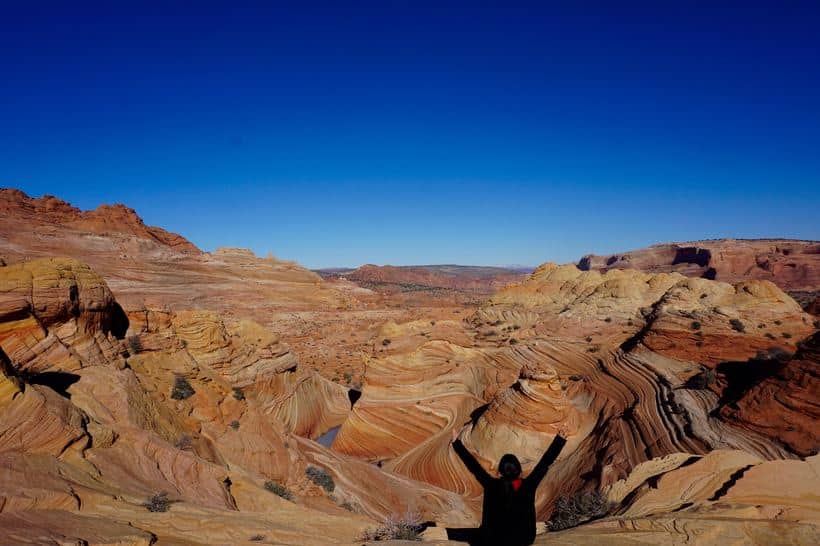Road trip has always been on my bucket list. I have to admit that it is an idea that I romanticize like a rite of passage, a celebration of freedom, and something mythically American. From the first “road trips” of the pioneers marching to the west to the California gold rush, the brave and unbridled chased the sun and conquered the wild land. Thus it was with curiosity did I embark on this journey from New York to Los Angeles. With my college roommate Evie, we traversed 10 states and logged 3500 miles for 8 days, spending every single moment other than loo and sleeping time in a silver Volkswagen. The snow and rain, sunrise and sunset, surreal landscapes and shabby motels on the road have become part of me, and unsurprisingly, have taught me something that I deem worth sharing.
I am foremost left with patience.
First, the very essence of a road trip is being on the road and about the journey itself rather than the destination, which requires a lot of patience. I’ve never spent so much time in a car as my family does not own a car, so I was at first worried about being bored by staying in a car for so long. However, it turned out that I was constantly occupied by staring at the changing views, getting lost in stray thoughts, or being consumed by excitement for the miles in front and the miles left behind. It was bizarre that when the body is on constant move, the mind loses track of time. Pico Iyer was right saying that travel is a heightened state of awareness, in which we are mindful, receptive, undimmed by familiarity and ready to be transformed. There were those little moments I now know by heart. Sitting in the unlit car with music blasted, I stared at the dusky mountains passed by, and afar there was sky splashed with blue, pink and yellow, birds were chirping in dry air, and taillights of cars on the highway formed a rivulet of lights. They were the humblest yet surest pleasures, beauty and inspirations.
QUANZHI GUO
Those little moments I now know by heart
Second, the majesty of nature and the force of time left me in awe and taught me about more patience.
At the Arches National Park, the tireless hands of water, ice and salt sculptured reddish rocks into towering arches and piercing spires. The time taken for the view I saw to form? 100 million years. Among all the breathtaking views I was honored to witness, my personal favorite was the Bryce Canyon National Park, where an amphitheater of hoodoos, which are bulbous rock columns, were wreathed with white snow and ablaze in red under the afternoon sun. Together with the crystalline sky and the evergreens by the edge of the cliff, the tumbling rocks were amazing enough to give me a “georgasm”, all thanks to the magic of weathering and nature. And still these natural landscapes are evolving, slowly but surely.
Great things take time, by its own course.
QUANZHI GUO
The Arches National Park
QUANZHI GUO
Overlooking the Bryce Canyon
QUANZHI GUO
The surreal Antelope Canyon
Third, I am humbled by the fact all these mind blowing wonders are yet a teeny slice of America. Many times I did not feel fitting in this America I’ve come to know at a private liberal arts college. Many times I have to remind myself not to judge and to stay open, that what I’ve experienced is only part of the larger society. On the road, I’ve seen long-distance walkers who payed homage to their beliefs and their God, hitchhikers who traveled by free rides for a sense of adventure, Couchsurfing hosts who welcomed us with such level of openness and trust, and RV campers who lived by moving around. And there are many more unknown parts, wonderful people, and possibilities to life, to this American life.
In a grain of sand, I actually cannot see the world.
I am also reaffirmed by this simple yet profound fact that we are small and insignificant in the universe. The arid, infertile and unobstructed land in Illinois, the expanse of the view on the road, and the chiseled Rocky mountain range are all hard yet stark reminders about the tininess of me, of human beings. The mind-blowing scale of gigantic rock mountains meandering for miles at the Zion National Park left me with an unspeakable finiteness, and all my concerns seemed inconsequential to the indifferent nature. By this realization of insignificance, I am not contending for despair or the futility of life. Rather, the larger-than-self context deflates one’s conceits and makes one in awe by the unknown.
QUANZHI GUO
Zion National Park
This humility endowed is a timely reminder as I have about a year left to figure out what to do after college, not mentioning what to do with life. I have not been paralyzed by anxieties or lost in possibilities, but I do get anxious at times. I did not get an epiphany from the wild, but seeing this fascinating piece of puzzle of the world still beckoning to be solved, knowing that, in the words of Carl Sagan, that “somewhere, something incredible is waiting to be known”, is an assurance among all the insurable.
However, my admiration for nature is still quite different from naturalists like Henry David Thoreau or individualists like Ralph Waldo Emerson. And this leads to my third takeaway: We as human beings can be free, but are still dependent.
This dependence appeared counter-intuitive or even weak to me at first. I can still recall the wild calling in my blood when I read Self-Reliance before coming to America, and road trip, after all, represents autonomy. However, by the end of the trip, I think self-reliance is not possible, and a healthy level of interdependence opens up possibilities.
During the first few days of our trip, there was heavy snow every night. As we were significantly slowed down by the bad road conditions, we had to drive till 11pm on slippery, snowy roads to keep up with our schedule. Many times we passed through cars that veered off the road and got stuck upside down in the snow. So whenever we saw snow plows, we would always salute the drivers to thank them as they were really our saviors. Also, the day we started driving towards the Rocky Mountains, there was a storm in the region that made it impossible to pass the mountain range, but by the time we actually got there at night, the roads were cleared and we were able to drive through the snow-capped mountain. So did we marvel at the Eisenhower Tunnel, the Theodore Roosevelt Dam and many interstate highways that are truly human engineering marvels.
QUANZHI GUO
The snow-capped Rocky Mountain
Apparently we would not make the trip if we reject technology — huge thank you to Google Maps for direction, infrastructure provided by the society — all the gas stations and highways, and all kinds of help from other human beings — the water and beef jerky shared by some strangers at the end of my nigh-prepared 4 hour hike at the Wave. And clearly by tapping into collective strengths, we can achieve things that we are incapable should we insist on being “rugged individualists”.
And on a more macro level, embracing this symbiosis invites more concern for those we are inevitably dependent on — bettering the public infrastructure such as by building more extensive transport systems, caring more about the people who are ensuring the functioning of our life and societies, preserve the nature that has provided us everything we need.
At the end of the road trip, I am nowhere closer to home, and my sixth-month of further traveling in Europe beckons, but I feel nigh homesickness. There are many more moments and views that have left a mark on me and there is no turning back. What I have now is a devout and awestricken heart for nature and this beautiful world that I am so lucky to be in.
As Pico Iyer put, “the best trips are like the best love affairs — they never really end.”
QUANZHI GUO
At the Wave
Quanzhi’s blog first appeared in the Huffington Post.


![What I Have Learned From My 3500-Mile-10-State Road Trip[:zh]What I have learned from my 3500-mile-10-state road trip](https://www.oneinabillionvoices.org/wp-content/uploads/2017/08/76_01a.jpg)

